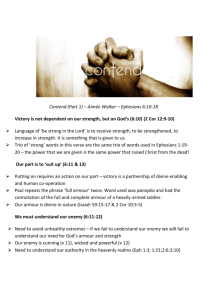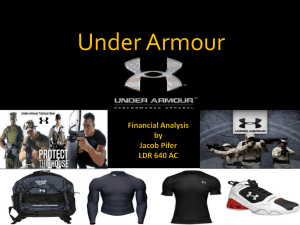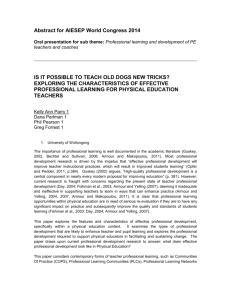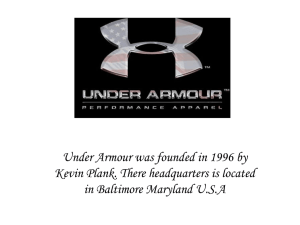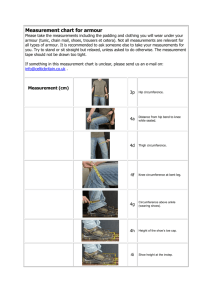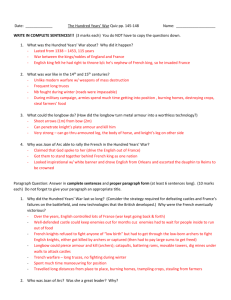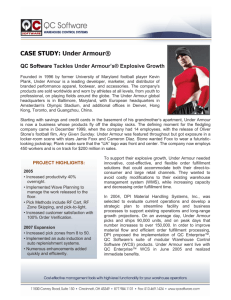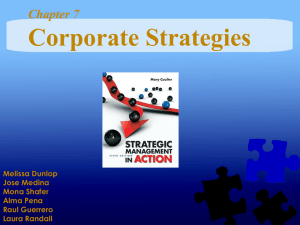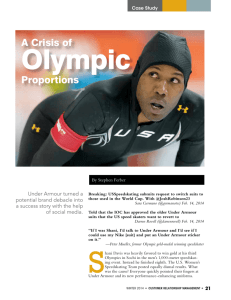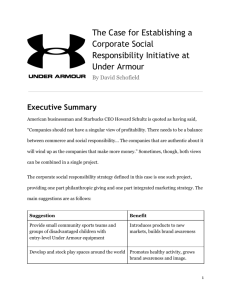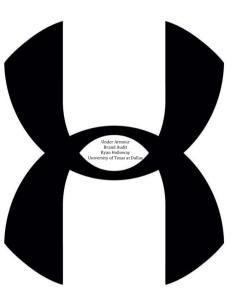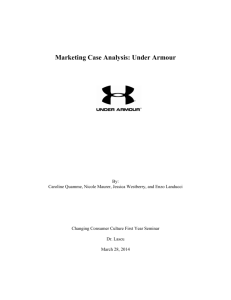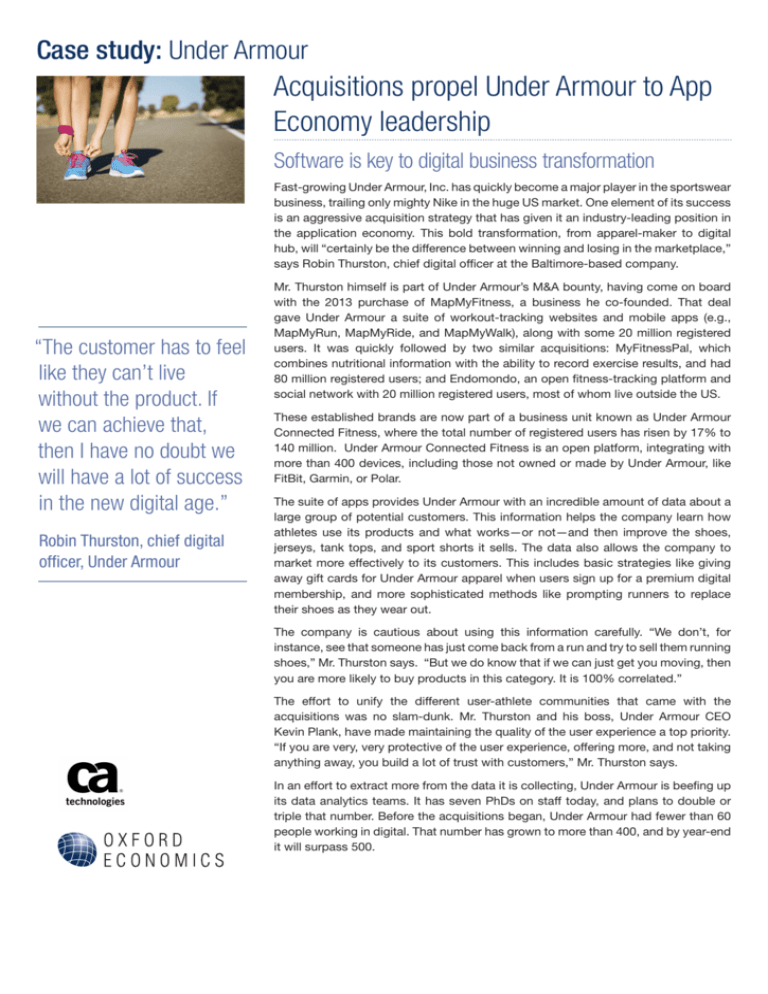
Case study: Under Armour
Acquisitions propel Under Armour to App
Economy leadership
Software is key to digital business transformation
Fast-growing Under Armour, Inc. has quickly become a major player in the sportswear
business, trailing only mighty Nike in the huge US market. One element of its success
is an aggressive acquisition strategy that has given it an industry-leading position in
the application economy. This bold transformation, from apparel-maker to digital
hub, will “certainly be the difference between winning and losing in the marketplace,”
says Robin Thurston, chief digital officer at the Baltimore-based company.
“The customer has to feel
like they can’t live
without the product. If
we can achieve that,
then I have no doubt we
will have a lot of success
in the new digital age.”
Robin Thurston, chief digital
officer, Under Armour
Mr. Thurston himself is part of Under Armour’s M&A bounty, having come on board
with the 2013 purchase of MapMyFitness, a business he co-founded. That deal
gave Under Armour a suite of workout-tracking websites and mobile apps (e.g.,
MapMyRun, MapMyRide, and MapMyWalk), along with some 20 million registered
users. It was quickly followed by two similar acquisitions: MyFitnessPal, which
combines nutritional information with the ability to record exercise results, and had
80 million registered users; and Endomondo, an open fitness-tracking platform and
social network with 20 million registered users, most of whom live outside the US.
These established brands are now part of a business unit known as Under Armour
Connected Fitness, where the total number of registered users has risen by 17% to
140 million. Under Armour Connected Fitness is an open platform, integrating with
more than 400 devices, including those not owned or made by Under Armour, like
FitBit, Garmin, or Polar.
The suite of apps provides Under Armour with an incredible amount of data about a
large group of potential customers. This information helps the company learn how
athletes use its products and what works—or not—and then improve the shoes,
jerseys, tank tops, and sport shorts it sells. The data also allows the company to
market more effectively to its customers. This includes basic strategies like giving
away gift cards for Under Armour apparel when users sign up for a premium digital
membership, and more sophisticated methods like prompting runners to replace
their shoes as they wear out.
The company is cautious about using this information carefully. “We don’t, for
instance, see that someone has just come back from a run and try to sell them running
shoes,” Mr. Thurston says. “But we do know that if we can just get you moving, then
you are more likely to buy products in this category. It is 100% correlated.”
The effort to unify the different user-athlete communities that came with the
acquisitions was no slam-dunk. Mr. Thurston and his boss, Under Armour CEO
Kevin Plank, have made maintaining the quality of the user experience a top priority.
“If you are very, very protective of the user experience, offering more, and not taking
anything away, you build a lot of trust with customers,” Mr. Thurston says.
In an effort to extract more from the data it is collecting, Under Armour is beefing up
its data analytics teams. It has seven PhDs on staff today, and plans to double or
triple that number. Before the acquisitions began, Under Armour had fewer than 60
people working in digital. That number has grown to more than 400, and by year-end
it will surpass 500.
Case study: Under Armour
Acquisitions propel Under Armour to App
Economy leadership
One measure of the priority Under Armour places on its digital strategy is that as
chief digital officer, Mr. Thurston reports directly to the CEO, Mr. Plank. He also
works closely with the entire senior executive team so that he can make sure the
digital focus infuses every aspect of Under Armour. The idea is to make sure the
app-centric strategy, like a good fitness regimen, becomes a regular part of life—for
both the company and its customers.
“We have to keep building things that people love so much they use them every day.
The customer has to feel like they can’t live without the product. If we can achieve
that, then I have no doubt we will have a lot of success in the new digital age,” Mr.
Thurston says.
About the research
This case study is based on a 2015 interview with with Robin Thurston, chief digital
officer at Under Armour. For more information about this research, read the full report,
“The Battle for Competitive Advantage in the App Economy.”
About CA Technologies
CA Technologies (NASDAQ: CA) creates software that fuels transformation for
companies and enables them to seize the opportunities of the application economy.
Software is at the heart of every business in every industry. From planning to
development to management and security, CA is working with companies worldwide
to change the way we live, transact, and communicate—across mobile, private, and
public cloud, distributed and mainframe environments. Learn more at ca.com.
About Oxford Economics
Oxford Economics is a global leader in thought leadership, forecasting, and
quantitative analysis, serving more than 850 international corporations, financial
institutions, governmental organizations, and universities worldwide. Founded in
1981 as a joint venture with Oxford University, Oxford Economics is now a leading
independent economic consultancy. Headquartered in Oxford, with offices around
the world, it employs more than 200 people, including over 120 economists, and
a network of 500 contributing researchers. Learn more at oxfordeconomics.com.
© Oxford Economics 2015—all rights reserved.

